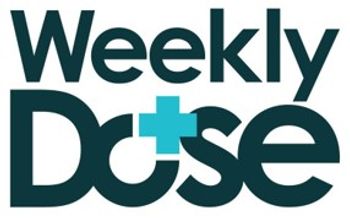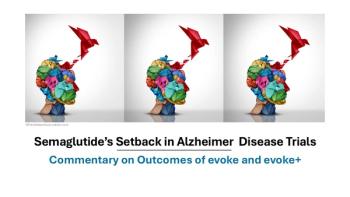
The Journal of Respiratory Diseases
- The Journal of Respiratory Diseases Vol 29 No 10
- Volume 29
- Issue 10
Postoperative complications in patients with OSA
To what extent are patients with obstructive sleep apnea syndrome (OSAS) at increased risk for postoperative complications? Are there any specific interventions that reduce the risks?
What are the post-op risks in patients who have obstructive sleep apnea?
To what extent are patients with obstructive sleep apnea syndrome (OSAS) at increased risk for postoperative complications? Are there any specific interventions that reduce the risks?
A limited number of studies have focused specifically on the impact of OSAS on perioperative outcomes. One of the major studies included patients undergoing hip or knee replacement and found that up to one-third of those with OSAS experienced substantial respiratory or cardiac complications, including arrhythmias, myocardial ischemia, unplanned ICU transfers, and reintubation.1 A smaller study that prospectively evaluated the incidence of arrhythmia in patients with OSAS undergoing coronary artery bypass surgery found that those with an oxygen desaturation index (defined as the number of desaturations of 4% or more per hour) of 5 or higher had a relative risk of 2.8 for the development of atrial fibrillation postoperatively.2
A more recent retrospective series included 25,587 patients who underwent cardiac surgery, 37 of whom were confirmed to have OSAS by polysomnography.3 After surgery, a higher incidence of encephalopathy (P < .008) and postoperative infection (P < .028) as well as a longer ICU stay (P < .03) were noted in the group with OSAS. The difference in the rates of infection was mostly accounted for by the presence of mediastinitis (8.1% vs 1.6%); the rates of reintubation, the duration of intubation, and overall postoperative morbidity did not differ between the 2 groups.
These studies are limited by the total number of patients who underwent polysomnography for suspected OSAS-a small number of patients given the limited awareness of this disorder and limited availability of polysomnography. However, the increased prevalence of OSAS among obese persons compared with the general population is well characterized, with estimates of 35% to 91% in patients undergoing bariatric surgery.4 A review of more than 3000 bariatric surgery cases from a single institution found OSAS to be a risk factor for anastomotic leaks.5 In addition, the presence of OSAS can double the odds of a length of stay longer than 3 days (odds ratio, 2.25) and is associated with a higher cost for postoperative care among patients undergoing bariatric surgery.6,7
The studies raise an important question about which patients should be evaluated for suspected OSAS and for which surgical procedures is such evaluation indicated. This is a very difficult question, although some data suggest that routine overnight polysomnography is warranted in all patients undergoing bariatric surgery.8 In the absence of a formal diagnostic evaluation, there are some useful clinical signs-for example, difficulty in visualizing the faucial pillars, soft palate, and base of the uvula predicts difficulty with intubation and should increase the suspicion of OSAS.9
In some cases, clinical suspicion for OSAS may first arise intraoperatively. Airway obstruction that is out of proportion to the apparent degree of sedation and a pronounced tendency for upper airway obstruction during surgery or on recovery from anesthesia can suggest undiagnosed OSAS as well.10 General anesthesia with a secure airway is preferable to deep sedation without a secure airway, particularly for procedures that may mechanically compromise the airway.
In obese patients who do not have gastroesophageal reflux, the preinduction use of positive end-expiratory pressure (PEEP) can significantly improve oxygenation and delay the onset of desaturation. In contrast, PEEP does not increase PAO2 or decrease the alveolar-arterial gradient in patients who are of normal weight. Practitioners should strongly consider taking advantage of the improved arterial oxygenation that preinduction PEEP can offer. Preinduction PEEP involves preoxygenation with a 100% fraction of inspired oxygen and 10 cm H2O PEEP for 5 minutes before the induction of general anesthesia, followed by 10 cm H2O PEEP during mask ventilation and after intubation.11
Continued inpatient monitoring is advised for patients with OSAS who are underoing major surgery or have significant expected pain or opioid requirement, severe OSAS at baseline who require continuous positive airway pressure (CPAP) at home, or observed obstruction or episodic desaturations in the recovery room.12 Routine ICU admission after surgery may not be necessary except in patients with coexisting cardiopulmonary disease or difficult airway.
Patients who are at increased perioperative risk from OSAS should be extubated while awake and after full reversal of neuromuscular blockade is verified. Benzodiazepines should be avoided whenever possible and narcotic use limited. Alternative forms of analgesia, such as NSAIDs, nerve blocks, and local analgesics, should be considered. Epidural analgesia may not eliminate the risk. Respiratory arrest has been reported in patients with OSAS who receive epidural opioids 2 to 3 days postoperatively.13
If neuraxial analgesia is planned, local anesthetics alone are preferred to opioids in combination. If narcotics are required for pain control, patients should be in a monitored setting. Patient-controlled analgesia (PCA) with no basal rate may help limit dosing. Dosing of the morphine PCA is not dependent on the patient's actual body weight or surface area and should be based on ideal body weight.14
Case series and limited data suggest that the use of CPAP in the perioperative setting may help reduce postoperative complications in patients with OSAS. In one study, for example, a 16% (95% confidence interval, 2.9% - 29.3%) absolute risk reduction in the rate of respiratory failure was reported in severely obese patients who received noninvasive ventilation during the first 48 hours postextubation.15
Gupta and associates1 found that the use of home CPAP in patients with OSAS who underwent joint replacement had a possible carryover protection resulting in a significantly lower rate of postoperative complications, although most of the patients did not receive CPAP in the hospital. This may be related, in part, to upper airway stabilization, a residual effect of CPAP after only 4 hours of use.16
References:
- Gupta RM, Parvizi J, Hanssen AD, Gay P. Postoperative complications in patients with obstructive sleep apnea syndrome undergoing hip or knee replacement: a case-control study. Mayo Clin Proc. 2001;76:897-905.
- Mooe T, Gullsby S, Rabben T, Eriksson P. Sleep-disordered breathing: a novel predictor of atrial fibrillation after coronary artery bypass surgery. Coron Artery Dis. 1996;7:475-478.
- Kaw R, Golish J, Ghamande S, et al. Incremental risk of obstructive sleep apnea on cardiac surgical outcomes. J Cardiovasc Surg (Torino). 2006;47:683-689.
- Hallowell PT, Stellato TA, Schuster M, et al. Potentially life-threatening sleep apnea is unrecognized without aggressive evaluation. Am J Surg. 2007;193:364-367.
- Fernandez AZ Jr, DeMaria EJ, Tichansky DS, et al. Experience with over 3,000 open and laparoscopic bariatric procedures: multivariate analysis of factors related to leak and resultant mortality. Surg Endosc. 2004;18:193-197.
- Ballantyne GH, Svahn J, Capella RF, et al. Predictors of prolonged hospital stay following open and laparoscopic gastric bypass for morbid obesity: body mass index, length of surgery, sleep apnea, asthma, and the metabolic syndrome. Obes Surg. 2004;14:1042-1050.
- Cooney RN, Haluck RS, Ku J, et al. Analysis of cost outliers after gastric bypass surgery: what can we learn? Obes Surg. 2003;13:29-36.
- O'Keeffe T, Patterson EJ. Evidence supporting routine polysomnography before bariatric surgery. Obes Surg. 2004;14:23-26.
- Mallampati SR, Gatt SP, Gugino LD, et al. A clinical sign to predict difficult tracheal intubation: a prospective study. Can Anaesth Soc J. 1985;32:429-434.
- Esclamado RM, Glenn MG, McCulloch TM, Cummings CW. Perioperative complications and risk factors in the surgical treatment of obstructive sleep apnea syndrome. Laryngoscope. 1989;99:1125-1129.
- Coussa M, Proietti S, Schnyder P, et al. Prevention of atelectasis formation during the induction of general anesthesia in morbidly obese patients. Anesth Analg. 2004;98:1491-1495.
- Tung A, Rock P. Perioperative concerns in sleep apnea. Curr Opin Anaesthesiol. 2001;14:671-678.
- Ostermeier AM, Roizen MF, Hautkappe M, et al. Three sudden postoperative respiratory arrests associated with epidural opioids in patients with sleep apnea. Anesth Analg. 1997;85:452-460.
- Shenkman Z, Shir Y, Brodsky JB. Perioperative management of the obese patient. Br J Anaesth. 1993; 70:349-359.
- El-Solh AA, Aquilina A, Pineda L, et al. Noninvasive ventilation for prevention of post-extubation respiratory failure in obese patients. Eur Respir J. 2006;28:588- 595.
- Hers V, Liistro G, Dury M, et al. Residual effect of nCPAP applied for part of the night in patients with obstructive sleep apnoea. Eur Respir J. 1997;10:973-976.
Articles in this issue
about 17 years ago
Diagnosing asthma in seniors: An algorithmic approachabout 17 years ago
Invasive pulmonary aspergillosis, part 1: DiagnosisNewsletter
Enhance your clinical practice with the Patient Care newsletter, offering the latest evidence-based guidelines, diagnostic insights, and treatment strategies for primary care physicians.
















































































































































































































































































